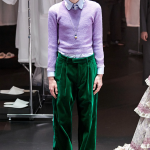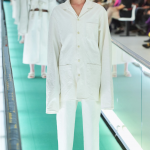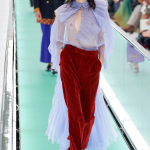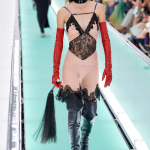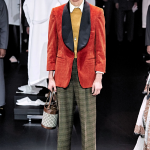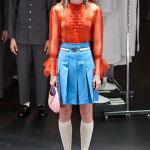
5 things we will remember about Alessandro Michele's experience at Gucci
Between maximalism, body liberation and quotations
November 24th, 2022
When Marco Bizzarri appointed Alessandro Michele as Gucci's creative director in 2015, it seemed the most natural internal choice for the brand - Michele was already accessories chief at Gucci -. The designer's debut collection was a lightning-fast reinterpretation of Frida Giannini's creative testament - five days to redesign every single detail of the show. Still, the press releases hinted at a change: non-conformist, romantic, intellectual - it was all in the words. Indeed, we saw countless variations of Gucci.
Training as a designer and costume maker at the Accademia di Costume & Moda in Rome, experience in accessories at Fendi, and a career at Gucci that began in 2002 were key elements in his career path. The Gucci that Alessandro Michele wanted to reshape was, above all, tired and lacked a convincing communicative vision. The intrigues of a complex and (dis)united family, the driven sensuality of Tom Ford, and the more taciturn glamour of Frida Giannini had shaped the aesthetic vision of the brand. In this undefined magma, Alessandro Michele was asked to comment on the GG monogram, with the downside that he'd give Gucci a new direction.
The response was more than positive: there was no magazine, celebrity, or person outside the mechanisms of fashion who was not aware of the hype created around the brand. Considering that human products in general have an internal cyclical nature, it was probably foreseeable that sooner or later, even a seemingly unshakable creative vision, supported by equally resounding turnovers, would encounter a natural crisis. During this crisis, the Kering group decided to take the most immediate and rapid action possible: replacement. But rewinding the tape of a creative direction in which the boundaries of fashion (and otherwise) have been relentlessly broken down and redefined, we tried to identify five key elements of Alessandro Michele's poetic manifesto.
Genderless fashion
In the years when metrosexual aesthetics were all the rage, Alessandro Michele intercepted the subversive power associated with gender: his clothes and styling used the body as a narrative and descriptive hypertext to liberate it from secular forms of stereotypes. Emblematic here was the FW20 collection in which school uniforms and kidswear functioned as a pretext to talk about toxic masculinity, patriarchy, and queer theory. Fashion, in Michele's sense, can and should move beyond gender binarism to offer a dimension that takes into account a complex and highly diverse human spectrum. Almost all of her collections, needless to say, challenge the categorical separation of male and female.
Theatrical shows
More than a designer, Alessandro Michele has always defined himself as a fashion archaeologist. His passion for costume, theater, and art has found in the shows a physical and narrative extension of Gucci's creative process. One need only recall the opening of the SS20 collection where models, in white straitjackets, walked as if anesthetized on a treadmill. The reflection with which Alessandro Michele started to compose this collection comes directly from Overseeing and Punishing, the essay in which Michel Foucault analyzed the system of control through which power transforms everything into the Panopticon, the eye that can controls the movement of everything and everyone.
The importance of the celebrity system
Another of his merits is that he intuited that brands, to be effective and aspirational, need to surround themselves with people as semantic sounding boards for their values. Harry Styles, Billie Eilish, Jared Leto, Lana Del Rey, and Florence Welch are just some of the names that Alessandro Michele and Gucci have become deeply connected to. Moreover, its attractiveness has allowed the brand to include rappers, actors, and even academic researchers like Paul Preciado in its parterre of followers.
The value of collaboration
Straddling the explosion of streetwear and the phenomenon of collaborations, Alessandro Michele was perhaps the first to question the idea of authenticity and value by hacking- that's the term circulated by the brand's press office - the aesthetic codes of another brand, Balenciaga, to celebrate Gucci's centennial. Not forgetting, of course, the consummate collaborations in the streetwear world with The North Face or the recent experiment with Palace.
The creation of a pop microcosm
Defining Alessandro Michele's work at Gucci, even more, was his ability to create spaces of community reflection that could combine marketability and creative vision: Gucci Garden Galleria, the Museum or Vault are true extended platforms for Alessandro Michele and Marco Bizzarri's project. The result is a microcosm that will most likely always be linked to its creator's legacy- «may you always live by your passions, buoyed by the wind of freedom» is its final seal.
















































